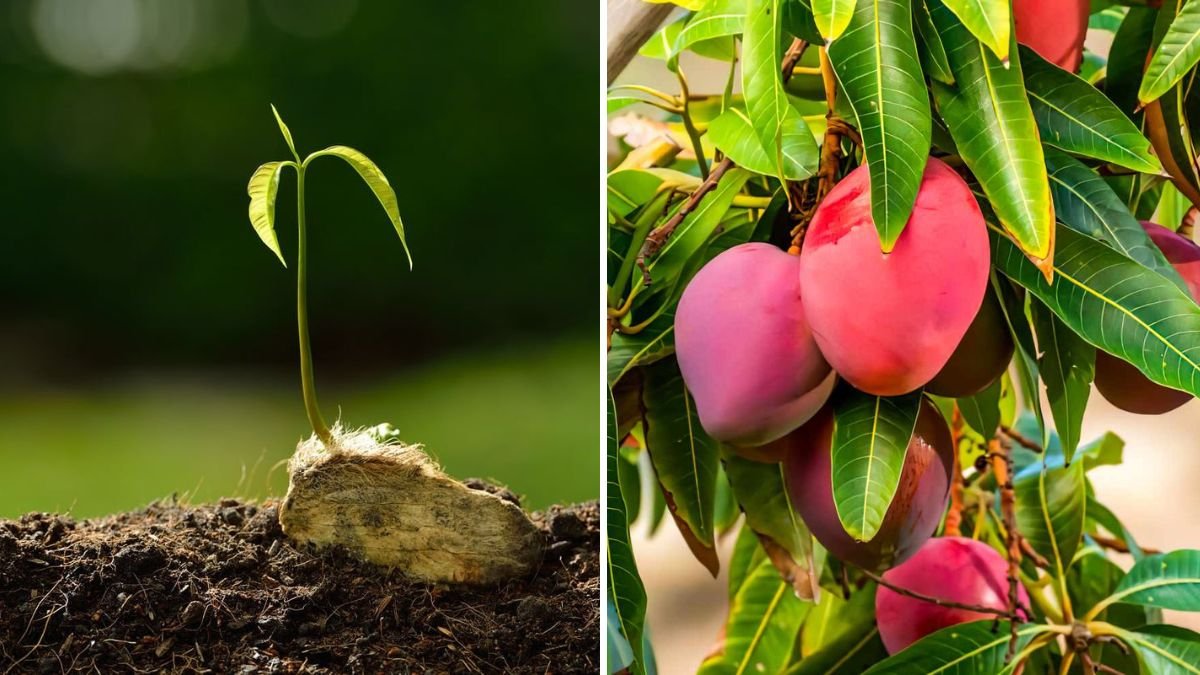Mangoes are one of the most beloved tropical fruits, famous for their juicy sweetness and refreshing flavor. If you’ve ever enjoyed a ripe mango and wondered whether you could grow your own tree from that seed—good news—you absolutely can! Growing a mango tree from seed is not only fun but also a rewarding project for gardeners of all levels.
Whether you live in a warm tropical region or want to start your mango indoors in a pot, this 7-step guide to planting mango trees from seeds will help you every step of the way—from extracting the seed to nurturing your young mango plant into a thriving tree.
Step 1: Choose the Right Mango and Extract the Seed
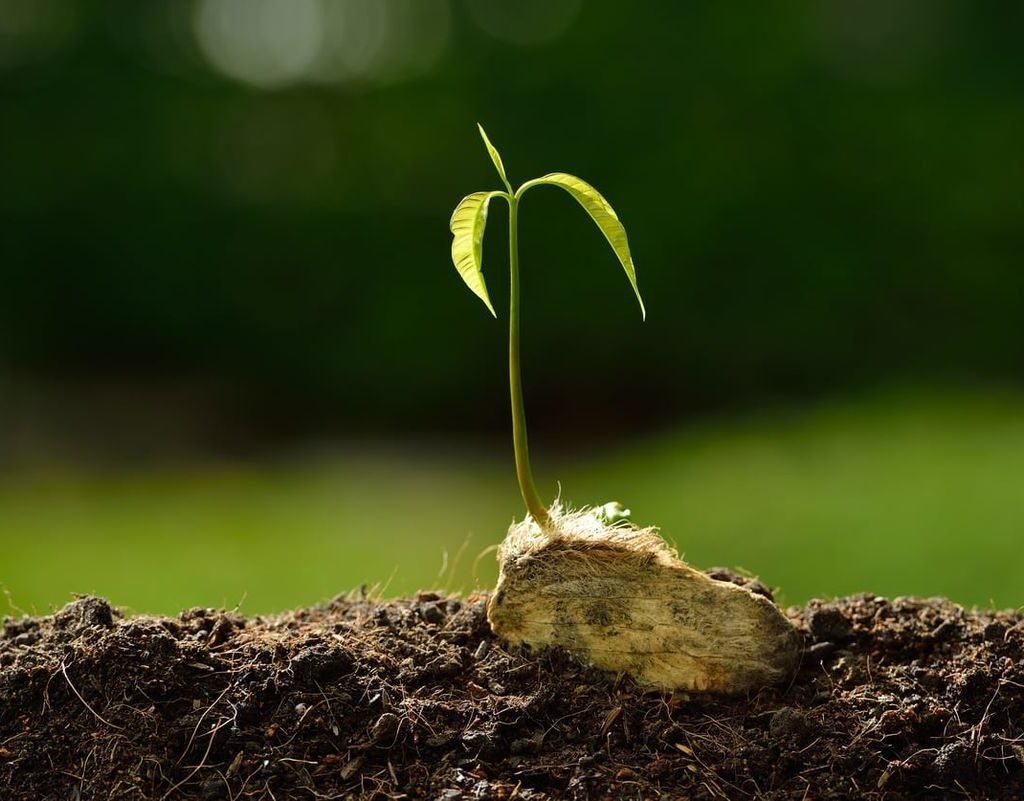
The journey begins with choosing the perfect mango. Opt for a fully ripe, healthy mango—preferably one that you enjoyed eating. The variety you choose matters because not all mangoes will grow well in your local climate. Popular home-growing varieties include Alphonso, Kent, Haden, or Ataulfo.
Once you’ve eaten the mango, don’t throw away the seed! Here’s what to do:
- Clean the seed husk: Wash off all fruit flesh so it doesn’t attract mold.
- Open the husk: Use a knife or scissors to carefully cut along the edge of the hard outer husk. Be gentle—you don’t want to damage the seed inside.
- Remove the seed: Inside, you’ll find a bean-like seed. This is what you’ll plant.
Tip: Some mangoes have a polyembryonic seed (multiple sprouts) while others are monoembryonic (single sprout). Polyembryonic seeds tend to produce true-to-type mango trees—meaning the fruit will resemble the parent mango.
Step 2: Pre-Germinate the Seed for Faster Growth

Mango seeds can be planted directly, but pre-germinating them gives you a head start. This process allows you to check which seeds are viable before planting.
How to pre-germinate mango seeds:
- Wrap the cleaned seed in a damp paper towel.
- Place it in a plastic bag or airtight container to keep it moist.
- Store the container in a warm, dark place—like a cupboard or near a sunny window.
- After 1–2 weeks, check for roots. You’ll see a small sprout emerging from the seed—this means it’s ready to plant!
Pro Tip: Keep the paper towel moist at all times. If it dries out, the seed may stop germinating.
Step 3: Prepare the Perfect Pot and Soil Mix
Mango trees love well-draining, nutrient-rich soil. Since you’ll start your seedling in a pot, it’s essential to create the right growing conditions.
Choose the Right Pot:
- Start with a 10–12 inch pot that has drainage holes.
- Later, you can transplant the mango into a larger container or directly into the ground.
Ideal Soil Mix:
Combine the following for the best results:
- 40% garden soil or loam
- 30% organic compost or coco peat
- 20% sand or perlite (for drainage)
- 10% cow dung manure or vermicompost
Mix well before planting to ensure air circulation and proper root growth.
Step 4: Plant the Seed the Right Way
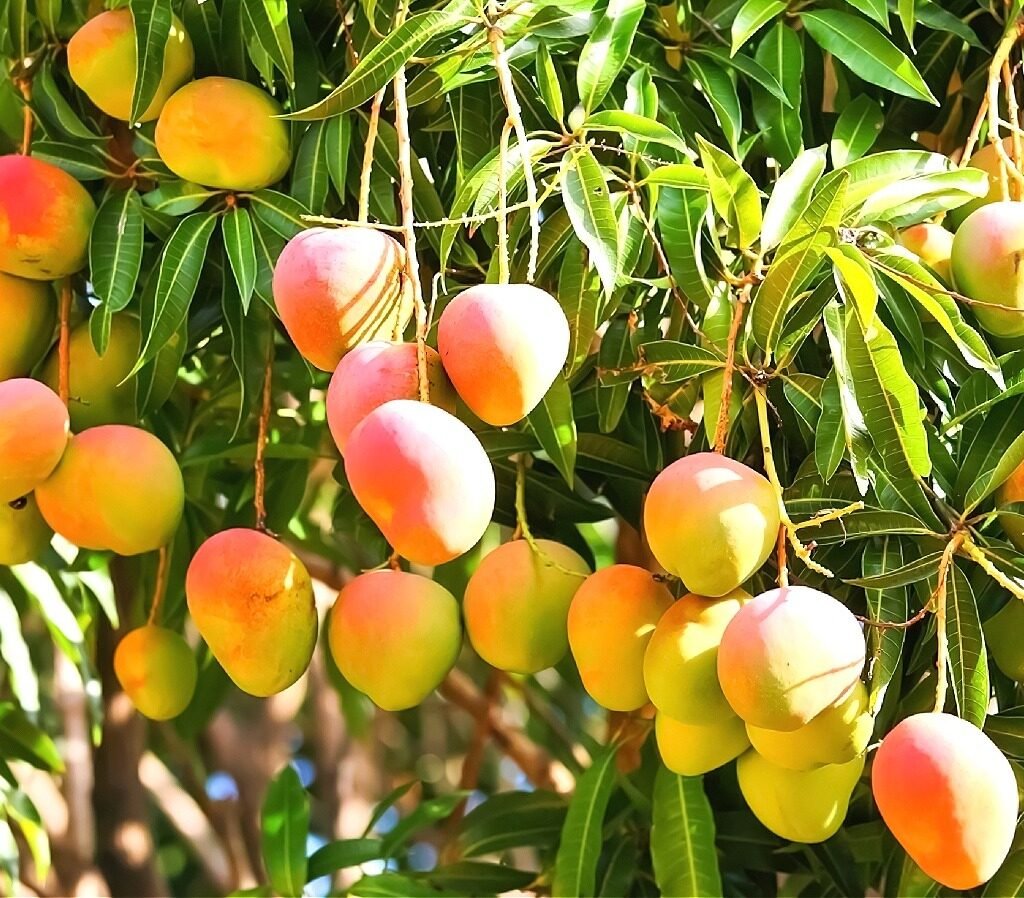
Once your seed is sprouted, it’s time to plant it.
How to plant a mango seed:
- Fill your pot with the prepared soil mix, leaving about an inch from the top.
- Place the seed flat on the soil surface, with the sprouted root facing downward.
- Gently cover the seed with ½ inch of soil.
- Water lightly until the soil is moist but not soggy.
Keep the pot in a warm, sunny spot, as mango seeds thrive in warmth. A temperature range of 24–30°C (75–86°F) is ideal for early growth.
Step 5: Water and Care for the Young Seedling
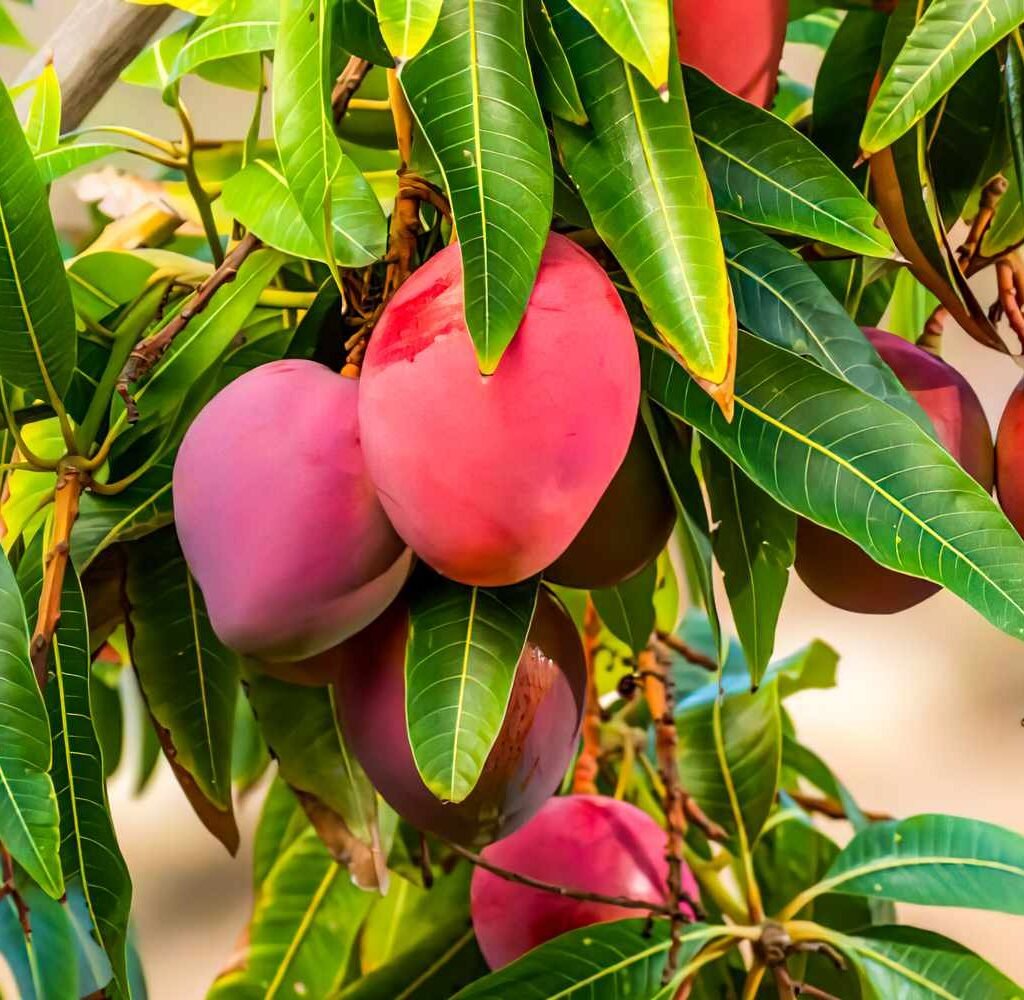
Your young mango plant will need proper care to grow strong and healthy.
Watering:
- Keep the soil consistently moist but avoid overwatering.
- Water only when the top inch of soil feels dry.
- During summer, increase watering frequency; in winter, reduce it.
Light:
- Mango seedlings need at least 6 hours of sunlight daily.
- If growing indoors, place your pot near a bright window or use a grow light.
Fertilization:
- After 3–4 weeks of planting, feed the seedling with a balanced liquid fertilizer (10-10-10 NPK) every 2–3 weeks.
- Once the tree matures, switch to a high-potassium fertilizer to promote fruiting.
Bonus Tip: Prune off weak or leggy growth to encourage a strong central stem and bushier growth.
Step 6: Transplant Your Mango Tree Outdoors
When your mango plant is about 12–18 inches tall and strong enough to handle outdoor conditions, it’s time to transplant it.
When to Transplant:
- The best time to transplant is in spring or early summer, when the weather is warm and rainfall is moderate.
How to Transplant:
- Choose a sunny, well-drained spot in your garden. Mangoes love full sunlight!
- Dig a hole twice as wide and deep as the pot.
- Add compost or organic manure to enrich the soil.
- Carefully remove the seedling from the pot without damaging the roots.
- Place the plant in the hole, cover with soil, and water thoroughly.
Important: Keep at least 15–20 feet of space between mango trees, as they grow large over time.
Step 7: Long-Term Care and Maintenance
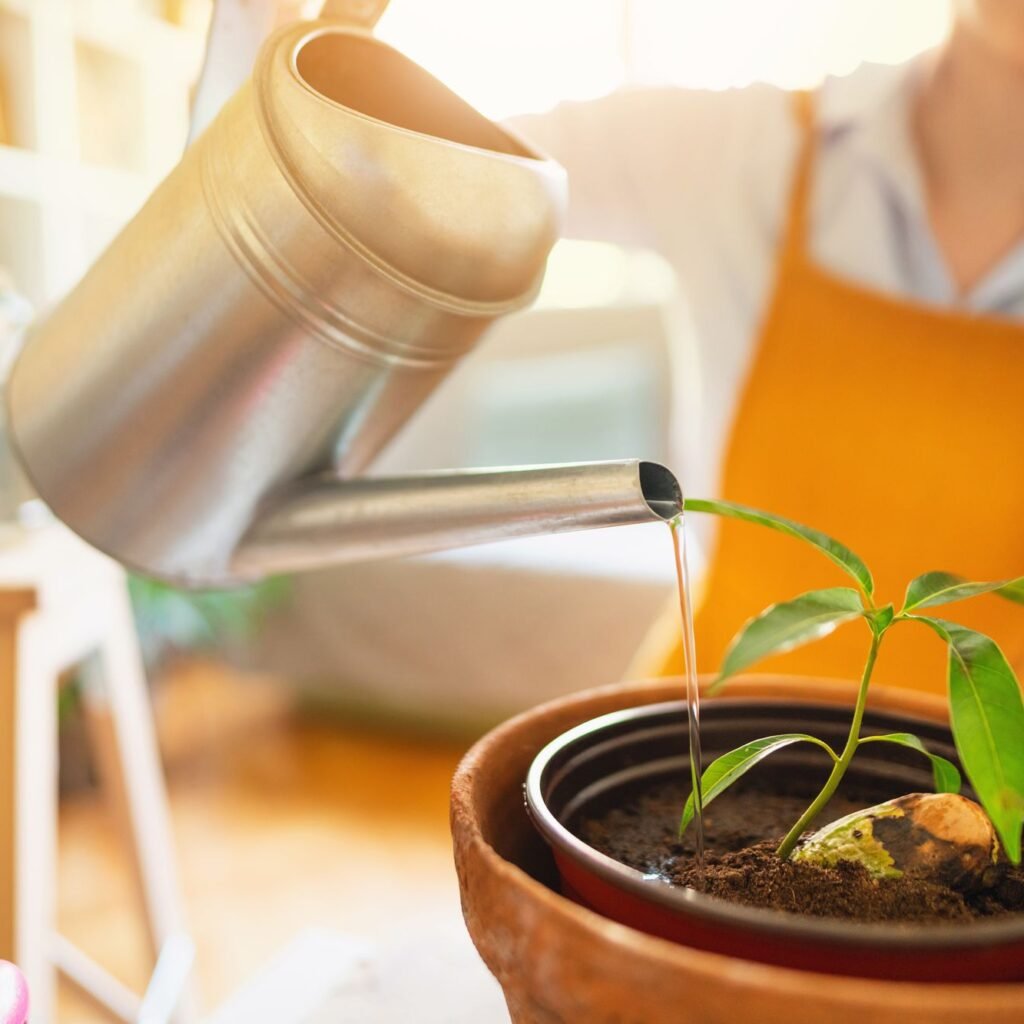
Congratulations! You’ve successfully planted your mango tree. Now comes the exciting part—watching it grow and eventually bear fruit.
Here’s how to ensure your tree thrives for years:
Pruning:
- Start pruning after the first year to shape the canopy.
- Remove dead or overlapping branches to allow airflow.
Fertilization:
- During the growing season (spring and summer), feed your mango tree every 6–8 weeks with organic compost or a fruit tree fertilizer.
Pest and Disease Management:
- Keep an eye out for common pests like aphids, scale insects, and mealybugs.
- Use neem oil spray or insecticidal soap to control infestations naturally.
Fruit Production:
- Mango trees grown from seed take 4–8 years to produce fruit, depending on variety and care.
- Be patient—healthy trees can yield hundreds of delicious mangoes once they mature!
Extra Tip: During flowering, reduce watering slightly to encourage fruit set. Once fruit appears, resume regular watering.
Final Thoughts
Growing a mango tree from seed is a beautiful blend of patience and reward. Each step—from germinating the seed to watching it bloom—connects you closer to nature and gives you the satisfaction of nurturing life from scratch.
Even if you start your mango plant indoors or in a small balcony garden, with time, care, and sunlight, it will grow into a magnificent tropical tree that not only provides shade but also rewards you with sweet, homegrown fruit.
So the next time you enjoy a juicy mango, save that seed—it might just become your very own fruit-bearing tree in a few years!
